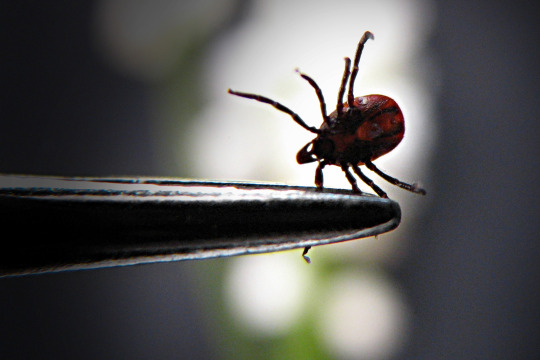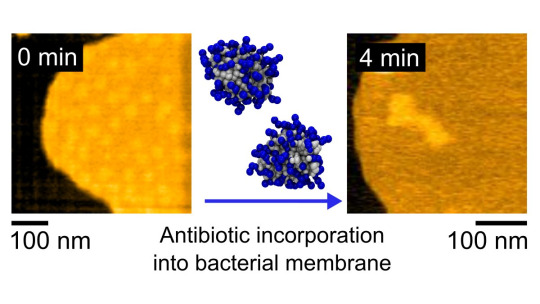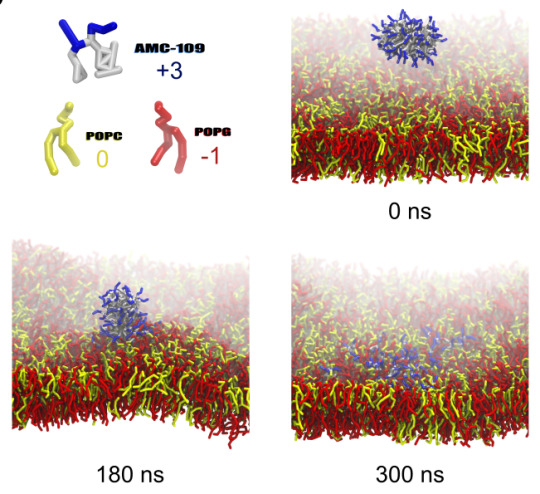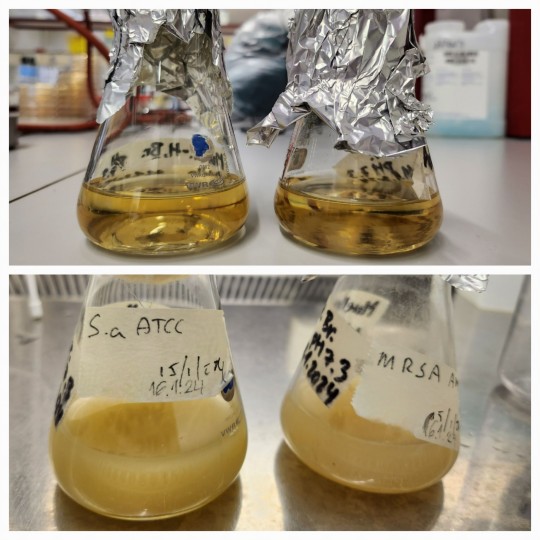#Antibiotic
Explore tagged Tumblr posts
Text
Good News From Israel
Israel's Good News Newsletter to 2nd Feb 2025
In the 2nd Feb 25 edition of Israel’s good news, the highlights include:
An Israeli university offers full scholarships to freed Gaza hostages.
An Israeli life-support system is being deployed to US hospitals.
The Head of Hadassah hospital saved a passenger on an El Al flight.
Israeli organizations saved lives in Las Angeles and Georgia.
See how cows are milked on an autonomous Israeli dairy farm.
Israeli tech will protect India and its trains.
You can behave like an animal at a new Israeli zoo.
Buy a home in Israel – while you can.
Read More: Good News From Israel

The portions of the Torah read in most synagogues during the last two weeks included the hardening of Pharaoh's heart and its disastrous consequences for Egypt. In contrast there have been many recent heartening and enheartening events and activities in Israel which are strengthening the nation and benefiting the world.
Medical news includes the US launch of a unique Israeli respiratory system to boost the heart's function of oxygenating the blood in life-support patients. Read how Israeli charity Belev Echad ("One Heart") helps rehabilitate wounded IDF soldiers. The AI system of Israeli emergency NGO United Hatzalah sent its EMTs to a shopping mall to treat a heart attack patient that it had predicted would need saving. And it certainly was a heart-stopping moment when an El Al passenger had a heart attack and was saved thanks to the Head of Hadassah hospital being on the flight.
There have been many enheartening stories in the last week, not least that of released hostages being reunited with their loved ones. The sight of Israeli SmartAID volunteers restoring power to dialysis patients in Los Angeles. New housing for Israeli lone soldiers. Free scholarships for ex-hostages at Israeli Universities. And the Swedish Member of the European Parliament who fights anti-Zionism.
Finally, thanks to the generous hearts of Australians who made cases for mezuzahs that will be fixed to the doors of residents of Israel returning to their rebuilt homes. And we hope that the heart of 101-year-old Walter Bingham, the world's oldest journalist, will keep beating until he reaches 120.
The photo is of early spring roses emerging on top of Netanya's "Wall of Hearts".
#antibiotic#astronaut#bees#clowns#El Al#Gaza#good news#hostages#IDF#Iron Beam#Israel#Jerusalem#Jewish#JNF#microbiome#mosquitos#Muslim#robots#sleep#ventilator
60 notes
·
View notes
Text

On this September 28, 2024, Cookie wishes you a clinical 95th anniversary to the bacteria-killing mold being noticed by Alexander Fleming while growing in his laboratory - later known to be penicillin (1928)!
#cat#cats#cookie#2024#cookie wishes you#cute cats#date#history#animals#this day in history#penicillin#science#medicine#antibiotic
67 notes
·
View notes
Text
My paper featured in the 50 best microbiology papers!
Our discovery of a new antibiotic target in bacteria was selected by a Nature Communications editor as one of the 50 best recently published papers in Microbiology and infectious diseases.
Search for "Lateral membrane organization" among the featured articles to find the research that I coordinated:
This surely gives me a boost for my next scientific work! Although it took ages to publish it (4 years this one) and A LOT of frustration, it was worth it!
#science#research#postdoc#women in science#biophysics#microbiology#infectious diseases#bacteria#antibiotic#antimicrobial resistance#featured#top 50#best articles#boost#original content
43 notes
·
View notes
Link
2 notes
·
View notes
Text
Dị ứng thuốc nếu không được chữa trị sớm và đúng cách có thể khiến bệnh nhân gặp phải nguy hiểm, đe dọa đến cả tình mạng. Vậy dị ứng thuốc là gì? Cách xử lý khi bị dị ứng thuốc ra sao?
#thuocdantoc#thuốc_dân_tộc#health#diung#diungthuoc#Allergy#Antibiotic#Medicine#health and wellness#healthcare#wellness#health & fitness#health tips
5 notes
·
View notes
Text
A protein found in human sweat may protect against Lyme disease
New Post has been published on https://thedigitalinsider.com/a-protein-found-in-human-sweat-may-protect-against-lyme-disease/
A protein found in human sweat may protect against Lyme disease


Lyme disease, a bacterial infection transmitted by ticks, affects nearly half a million people in the United States every year. In most cases, antibiotics effectively clear the infection, but for some patients, symptoms linger for months or years.
Researchers at MIT and the University of Helsinki have now discovered that human sweat contains a protein that can protect against Lyme disease. They also found that about one-third of the population carries a genetic variant of this protein that is associated with Lyme disease in genome-wide association studies.
It’s unknown exactly how the protein inhibits the growth of the bacteria that cause Lyme disease, but the researchers hope to harness the protein’s protective abilities to create skin creams that could help prevent the disease, or to treat infections that don’t respond to antibiotics.
“This protein may provide some protection from Lyme disease, and we think there are real implications here for a preventative and possibly a therapeutic based on this protein,” says Michal Caspi Tal, a principal research scientist in MIT’s Department of Biological Engineering and one of the senior authors of the new study.
Hanna Ollila, a senior researcher at the Institute for Molecular Medicine at the University of Helsinki and a researcher at the Broad Institute of MIT and Harvard, is also a senior author of the paper, which appears today in Nature Communications. The paper’s lead author is Satu Strausz, a postdoc at the Institute for Molecular Medicine at the University of Helsinki.
A surprising link
Lyme disease is most often caused by a bacterium called Borrelia burgdorferi. In the United States, this bacterium is spread by ticks that are carried by mice, deer, and other animals. Symptoms include fever, headache, fatigue, and a distinctive bulls-eye rash.
Most patients receive doxycycline, an antibiotic that usually clears up the infection. In some patients, however, symptoms such as fatigue, memory problems, sleep disruption, and body aches can persist for months or years.
Tal and Ollila, who were postdocs together at Stanford University, began this study a few years ago in hopes of finding genetic markers of susceptibility to Lyme disease. To that end, they decided to run a genome-wide association study (GWAS) on a Finnish dataset that contains genome sequences for 410,000 people, along with detailed information on their medical histories.
This dataset includes about 7,000 people who had been diagnosed with Lyme disease, allowing the researchers to look for genetic variants that were more frequently found in people who had had Lyme disease, compared with those who hadn’t.
This analysis revealed three hits, including two found in immune molecules that had been previously linked with Lyme disease. However, their third hit was a complete surprise — a secretoglobin called SCGB1D2.
Secretoglobins are a family of proteins found in tissues that line the lungs and other organs, where they play a role in immune responses to infection. The researchers discovered that this particular secretoglobin is produced primarily by cells in the sweat glands.
To find out how this protein might influence Lyme disease, the researchers created normal and mutated versions of SCGB1D2 and exposed them to Borrelia burgdorferi grown in the lab. They found that the normal version of the protein significantly inhibited the growth of Borrelia burgdorferi. However, when they exposed bacteria to the mutated version, twice as much protein was required to suppress bacterial growth.
The researchers then exposed bacteria to either the normal or mutated variant of SCGB1D2 and injected them into mice. Mice injected with the bacteria exposed to the mutant protein became infected with Lyme disease, but mice injected with bacteria exposed to the normal version of SCGB1D2 did not.
“In the paper we show they stayed healthy until day 10, but we followed the mice for over a month, and they never got infected. This wasn’t a delay, this was a full stop. That was really exciting,” Tal says.
Preventing infection
After the MIT and University of Helsinki researchers posted their initial findings on a preprint server, researchers in Estonia replicated the results of the genome-wide association study, using data from the Estonian Biobank. These data, from about 210,000 people, including 18,000 with Lyme disease, were later added to the final Nature Communications study.
The researchers aren’t sure yet how SCGB1D2 inhibits bacterial growth, or why the variant is less effective. However, they did find that the variant causes a shift from the amino acid proline to leucine, which may interfere with the formation of a helix found in the normal version.
They now plan to investigate whether applying the protein to the skin of mice, which do not naturally produce SCGB1D2, could prevent them from being infected by Borrelia burgdorferi. They also plan to explore the protein’s potential as a treatment for infections that don’t respond to antibiotics.
“We have fantastic antibiotics that work for 90 percent of people, but in the 40 years we’ve known about Lyme disease, we have not budged that,” Tal says. “Ten percent of people don’t recover after having antibiotics, and there’s no treatment for them.”
“This finding opens the door to a completely new approach to preventing Lyme disease in the first place, and it will be interesting to see if it could be useful for preventing other types of skin infections too,” says Kara Spiller, a professor of biomedical innovation in the School of Biomedical Engineering at Drexel University, who was not involved in the study.
The researchers note that people who have the protective version of SCGB1D2 can still develop Lyme disease, and they should not assume that they won’t. One factor that may play a role is whether the person happens to be sweating when they’re bitten by a tick carrying Borrelia burgdorferi.
SCGB1D2 is just one of 11 secretoglobin proteins produced by the human body, and Tal also plans to study what some of those other secretoglobins may be doing in the body, especially in the lungs, where many of them are found.
“The thing I’m most excited about is this idea that secretoglobins might be a class of antimicrobial proteins that we haven’t thought about. As immunologists, we talk nonstop about immunoglobulins, but I had never heard of a secretoglobin before this popped up in our GWAS study. This is why it’s so fun for me now. I want to know what they all do,” she says.
The research was funded, in part, by Emily and Malcolm Fairbairn, the Instrumentarium Science Foundation, the Academy of Finland, the Finnish Medical Foundation, the Younger Family, and the Bay Area Lyme Foundation.
#000#Analysis#Animals#antibiotic#Antibiotics#antimicrobial#approach#Bacteria#Biological engineering#Biology#Broad Institute#Cells#communications#data#Delay#Disease#disruption#engineering#eye#factor#fatigue#Finland#Foundation#Full#genetic#Genetics#genome#growth#how#human
2 notes
·
View notes
Text
How Nanotech Is Revolutionizing Modern Medicine 2025

How Nanotech Is Revolutionizing Modern Medicine 2025
🧬 The Official Breakdown (Science Says This Is Real Life) Nanotechnology in medicine isn’t science fiction anymore — it’s here, and it's reshaping how we diagnose, treat, and even prevent diseases. At its core, nanotech means working with materials on the nanoscale — that’s about 1 to 100 nanometers. For context, a single sheet of paper is about 100,000 nanometers thick. So yeah, we’re talking tiny-tiny. In medicine, this nano-level control allows scientists to: - Deliver drugs directly to specific cells — like a missile with a GPS, minimizing side effects. - Create nano-sensors that detect diseases before symptoms even show up. - Develop smart bandages that release medicine based on your body’s needs. - Build artificial cells and nanobots that can repair tissues from the inside out. And that’s just scratching the surface. Fields like oncology (cancer treatment), neurology, and gene therapy are already being transformed by this tech. Clinical trials are proving that nanotech-based treatments can target tumors more precisely, reduce chemo’s brutal side effects, and help patients recover faster. This is the future of healthcare — except it’s already happening. 💥 The Human Take (Because Science Shouldn’t Feel Like a Robot Wrote It) Alright, science gave us the fancy version. But let me talk to you like a human — because you’re not here for textbook jargon. You’re here to understand it. So here’s the deal: Imagine going to the doctor, and instead of getting hooked up to a bunch of wires, tubes, and needles, they give you a tiny capsule. You swallow it. Inside? A swarm of microscopic tech that knows exactly what’s wrong with you — and fixes it, from the inside. No hospital bed. No surgery. No “wait and see.” Just precision, speed, and hope. That’s nanotech in medicine. This isn’t some Marvel movie subplot. This is real-world science changing lives, one nanoparticle at a time. And what blows my mind? We’re still at the beginning. We haven’t even unlocked its full potential yet.




🧠 So Why Does This Matter So Much? Because the way we’ve treated disease for decades is kind of like using a sledgehammer to fix a watch. Think about it: - Chemotherapy kills cancer cells — but also kills a bunch of healthy ones. - Antibiotics work great — until your body builds resistance. - Surgeries are lifesaving — but they’re risky, painful, and slow to recover from. Nanotech is flipping that script. It’s about targeting exactly what needs fixing — and leaving everything else alone. It’s like having a mechanic who doesn’t just say “your engine’s busted” but instead goes in, swaps out a micro-part, and gets you running smoothly — without breaking a sweat. It’s careful. It’s personal. It’s next level. 👀 Real Stuff Happening Right Now Let me throw you a few mind-blowing real examples: - Gold nanoparticles are being used to burn tumors from the inside using light (yes, literally light-triggered therapy). - Lipid nanoparticles helped deliver mRNA vaccines (remember COVID-19 shots? Thank nanotech). - DNA origami (yes, folding DNA like paper) is being used to build nanorobots that carry medicine and release it only when they find a specific disease marker. This isn’t just theory. This is happening in hospitals and labs all over the world. 😬 Okay, But Is There a Catch? Sure. Every new technology comes with risks and questions: - What if the body rejects nanomaterials? - What are the long-term effects? - Could nanotech be misused in unethical ways? These aren’t small questions. But that’s exactly why we need people like you learning, asking, and building with purpose. Because the tools themselves aren’t good or bad. It’s how we use them that defines their legacy. 🫀 The Soul of It All What makes this all so powerful isn’t just the science — it’s what it means for real people. - A kid with leukemia finally getting a treatment that doesn’t wreck their immune system. - A parent with Alzheimer’s holding on to their memories because a nanosensor detected brain changes before symptoms showed up. - A person in a rural village getting a diagnosis from a single drop of blood — without needing a full hospital. That’s the real revolution: dignity. Nanotech is bringing back the one thing medicine has always fought for — hope with precision. External Resource: Want to dive deeper into the science? Check the Wikipedia page: Nanomedicine https://en.wikipedia.org/wiki/Nanomedicine Related Articles from EdgyThoughts.com: How the Human Brain Is Being Mapped in Real Time 2025 https://edgythoughts.com/how-the-human-brain-is-being-mapped-in-real-time-2025 How Biotech Is Blurring the Line Between Human and Machine 2025 https://edgythoughts.com/how-biotech-is-blurring-the-line-between-human-and-machine-2025 Read the full article
#100000#20250101t0000000000000#2025httpsedgythoughtscomhowbiotechisblurringthelinebetweenhumanandmachine2025#2025httpsedgythoughtscomhowthehumanbrainisbeingmappedinrealtime2025how#alzheimer'sdisease#antibiotic#antimicrobialresistance#artificialcell#bandage#cancer#cancertreatment#capsule(fruit)#cell(biology)#chemotherapy#clinicaltrial#colloidalgold#covid19#disease#dnaorigami#edgythoughtscom#genetherapy#healthcare#hospital#humanbrain#immunesystem#jargon#leukemia#marvelcomics#medicaldiagnosis#medicine
0 notes
Text
Learn about Ciplox 500 Tablet, including its uses for bacterial infections, proper dosage, potential side effects, and important precautions. Get expert advice on how to safely use this antibiotic medication.
0 notes
Text

“Boost your pharma business with Azithromycin 500 mg Tablets – a trusted antibiotic for bacterial infections! 💊💙
🔹 Broad-spectrum antibiotic 🔹 Effective for respiratory & skin infections 🔹 High-quality formulation
📢 PCD Pharma Franchise Available! Partner with us for monopoly rights, competitive pricing & premium products. ☎️DM for inquiries:- 98177 94896 🌎Website:- www.medoxcapharma.com
#azithromycin500mg#pharmafranchise#antibiotics#pharmabussiness#monopoly#antibiotic#pcdpharmacompany#pharmaceutical#pcd pharma franchise#pharmabusiness#pharmacy#pcdpharmafranchise#thirdpartymanufacturing#pharmaindustry
0 notes
Text

“Boost your pharma business with Azithromycin 500 mg Tablets – a trusted antibiotic for bacterial infections! 💊💙
🔹 Broad-spectrum antibiotic 🔹 Effective for respiratory & skin infections 🔹 High-quality formulation
📢 PCD Pharma Franchise Available! Partner with us for monopoly rights, competitive pricing & premium products. ☎️DM for inquiries:- 98177 94896 🌎Website:- www.medoxcapharma.com
#azithromycin500mg#pharmafranchise#antibiotics#pharmabussiness#monopoly#antibiotic#pcdpharmacompany#pharmabusiness#pcdpharmafranchise#pharmacy#medoxcapharma#thirdparty#painrelief
0 notes
Text
We found a new antibiotic target in bacteria!!
It took almost 4 years, but the fruits of my postdoc research are finally here! In our paper (with me as the first author), just published in Nature Communications, we decipher a working mechanism of an antibiotic that targets the membrane of bacteria in an unprecedented way!
enhanced PDF: https://rdcu.be/dgj2d web version: https://lnkd.in/eRpxr4jg

And how does it work?
The antibiotic AMC-109 first self-assembles into stable aggregates with a cationic surface. These aggregates then specifically target bacteria cells and insert into their membrane.
You can see the process how we simulated it in a computer on the figure below. Grey-Blue is the antibiotic, Red-Yellow are lipids that together form a membrane.
@jmelcr did this awesome simulation work! You are an amazing scientist, jmelcr! I love you and it seems our collaboration did not ruin our marriage. Not yet, anyway 😄.

After insertion into the bacterial membrane, the antibiotic dissolves membrane nanodomains affecting membrane function without formation of any pores or holes in the membrane.
Below is the series of high-speed atomic force microscopy images that shows the process of dissolution of membrane nanodomains. Yellow are the membranes extracted from bacteria laying flat on a hard surface (black). The membranes contain nanodomains (bright yellow) that are important in living bacteria for its survival. Addition of antibiotic dissolves them.

More studies will follow that use this new target in bacteria giving us an advantage over untreatable superbugs. I will keep you posted. And... keep your fingers crossed. It's research after all, so we never know if and how well it's going to work.
#science#women in science#research#postdoc#stem#biophysics#antimicrobial#antibiotic#amr#achievement#scientific journals#publication#breakthrough#original content
54 notes
·
View notes
Text
Clindamycin
Clindamycin is a lincosamide antibiotic used to treat various bacterial infections, including those of the lungs, skin, blood, female reproductive organs, and internal organs. It works by inhibiting bacterial protein synthesis, effectively stopping the growth of bacteria. Available in oral, topical, and injectable forms, clindamycin is often prescribed when other antibiotics are unsuitable. Common side effects may include nausea, vomiting, diarrhea, and rash. It's essential to complete the full course as prescribed to prevent the development of antibiotic-resistant bacteria. Consult your healthcare provider for personalized advice before starting clindamycin. Get more information click on this link: https://www.edinburghpharma.in/
#cilndamycin#pharma company#antibiotic#bestpharmacompany#best pharma company in india#anti diabetic franchisee#anti-diabetic franchise#top 10best pharma#doctors
0 notes
Text
Dị ứng thuốc kháng sinh xảy ra khi hệ miễn dịch phản ứng quá mức, gây hại cho cơ thể khi sử dụng hoặc tiếp xúc với các loại thuốc này. Vậy triệu chứng dị ứng thuốc kháng sinh là gì? Cách điều trị như thế nào?
#thuocdantoc#thuốc_dân_tộc#health#diung#diungthuockhangsinh#Allergy#Antibiotic#health and wellness#healthcare#wellness#health & fitness#health tips#healthyfood
5 notes
·
View notes
Text
SciTech Chronicles. . . . . . . . .Feb 15th, 2025
#Diabetes#antibiotic#resistance#infection#Murchison#airplane#reflection#RFI CRISPR-Cas9#Cas9#RNA#metagenomics#Dragonfly#Titan#Methane#Ingenuity#Londinium#tribunal#70AD#preservation
0 notes
Text

TSRNOSS, p 690.
#sulphur#bromine#antibiotic#cysteine#sulfhydryl group#Kamchatka#fever#bears#male stags#seeds#birds#Little Ice Age#leaf canopy
0 notes
Text
18 hours difference of bacteria growth

How much can Staphylococcus aureus bacteria grow in less than a day? I add a few drops of bacteria into a fresh medium (basically a meat bouillon soup) and after 18 hours I count tens of billions bacteria per milliliter. Literally, today I had 8x10^10 bacteria/ml. They grow like crazy when given the chance.
For the next 24 hours, I let them bath in antibiotics. Hehe!
#microbiology#bacteria#MRSA#staphylococcus#antibiotic#science#research#postdoc#crazy#stem#biophysics#academia#medical research#killing time#original content
18 notes
·
View notes